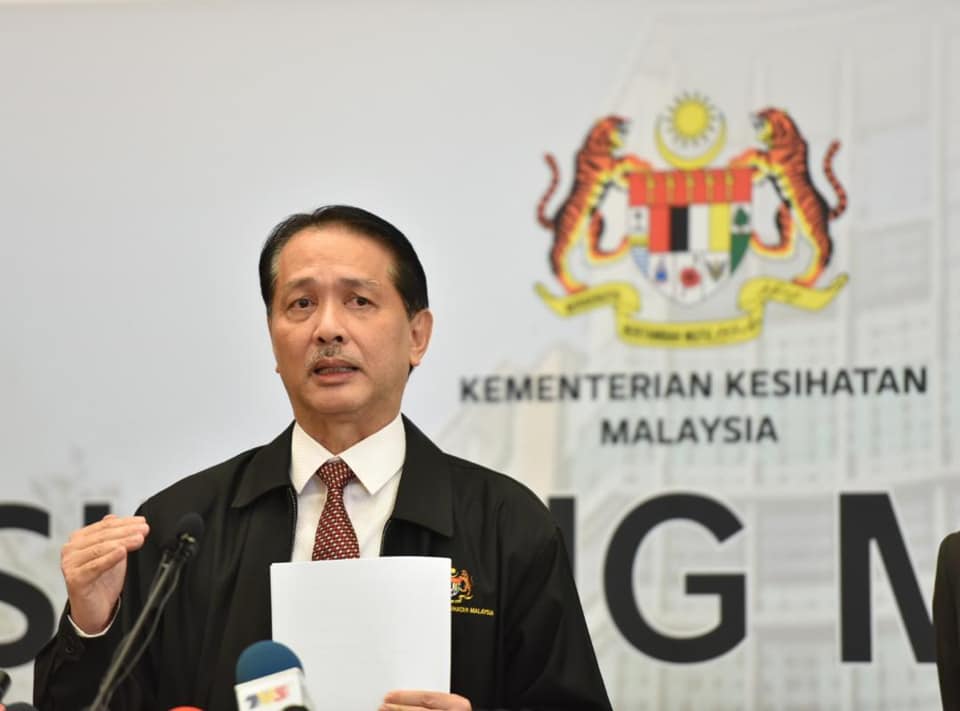KUALA LUMPUR, August 27 — The Ministry of Health (MOH) said it found the D614G coronavirus strain in the Tawar cluster that has hit 73 Covid-19 cases to date.
According to Health director-general Dr Noor Hisham Abdullah, the mutated virus that has been identified in the Tawar cluster was the same as the Sivagangga persons-under-investigation (PUI) cluster with 45 Covid-19 cases, both of which have originated in Kedah.
“From genomic sequencing, we managed to find that the mutation from Tawar and Sivagangga PUI clusters is the same. But we have not found the epidemiology link. So now we need to investigate which patient, for example, has a link to the Sivagangga group,” Dr Noor Hisham said in a press conference today.
“But the virus is the same virus that has seen mutation. So that is what we found from our lab. It is still ongoing. Fourteen samples have been sent; four samples we have got the report.”
Four samples from the Tawar cluster were compared with three virus samples from the Sivagangga PUI cluster in MOH’s virological study. The results showed that all seven of these samples belong to the same clade. A genetic clade refers to a group under a sub-type of a virus.
This shows the possibility that the Tawar and the Sivagangga PUI clusters most likely originated from the same source.
“What is more important is to know that if there is a mutation of D614G that means the infectivity is high.”
He also highlighted MOH’s quick public health intervention which has helped to contain the virus in the Sivagangga PUI cluster.
“As you can see for the last 16 days, we do not have any cases from the Sivagangga PUI cluster because of our rapid public health action. So now we need to focus on this group in the Tawar cluster,” the DG added.
As of today, a total of 4,521 people have been screened in the Tawar cluster. No new cases were reported under this cluster, today, leading to a total of 73 Covid-19 cases.
A total of 21 children tested positive for the coronavirus among the 73 Covid-19 patients in the Tawar cluster.
“But none of the children have been admitted into intensive care unit (ICU) for treatment, which means in terms of their susceptibility to infection, there is no doubt for that. But in terms of the spread or severity of the infection, they are still treated in hospital. We are monitoring them closely. We hope that they are able to recover from this infection,” the DG stated.
In Kedah, of the 3,983 people who were screened, 62 cases were detected positive, whereby three of them are being treated in ICU. A total of 3,453 individuals tested negative, while 468 people are still waiting for the test result.
In Penang, out of the 527 people who were screened, 11 cases tested positive and two of them are in ICU now. A total of 516 people tested negative.
In Perak, all of the 11 people who were screened tested negative for the virus.
The first case from the Tawar cluster was reported on August 12. In the next 14 days, a total of 72 positive cases were detected for this cluster which involved three generations of spread.
Apart from public health measures such as active case detection to curb Covid-19 transmission, risk assessment for the Tawar cluster has been carried out as well. The risk assessment revealed that:
- Distribution of Covid-19 positive cases is not concentrated only in one locality.
- The reported transmission began from an asymptomatic case.
- The D614G virus which is present in the Tawar cluster is similar to the virus in the Sivagangga PUI cluster.
- The outbreak occurred in densely populated areas.
- High mobility of residents within and outside the area with infections.
- Low screening coverage (the positivity rate is more than one per cent).








